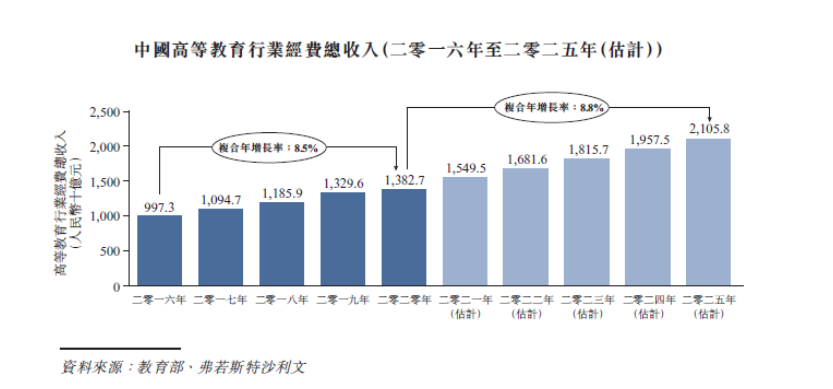Scale and prospect of higher education industry
Since the new century, the audience scope and scale of higher education in the world have been expanding, the popularization process has been accelerated, and the relationship between higher education and economic and social development has been strengthened. At the same time, however, the gap in the development of higher education between regions and countries (regions) is also widening, and a fair and inclusive global higher education system has not yet formed. Although popularization is the inevitable trend of the development of higher education in the world, the development of higher education in different countries (regions) presents different states due to the influence of social factors such as economy, culture and politics
Except for a few countries (regions) such as Britain, Sweden, Qatar and Uzbekistan, the gross enrollment rate of higher education in other countries (regions) in the world has generally maintained a growth trend. However, from the perspective of development speed, the development of higher education in countries (regions) at the same stage at the end of the 20th century showed great differences in the following ten years.
In 2020, there will be 2738 colleges and universities in China. Among them, 1270 undergraduate colleges and universities (including 21 vocational schools at the undergraduate level); 1468 higher vocational (junior college) colleges. There are 41.83 million people in all forms of higher education, with a gross enrollment rate of 54.4%. A total of 9674500 students were enrolled in general undergraduate and junior college programs nationwide, and 32852900 students were enrolled. 1106600 graduate students were enrolled, and 3139600 graduate students were enrolled. A total of 3.6376 million adult college students and 7.7729 million college students were enrolled nationwide. 2.7791 million college students and 8.4645 million college students were recruited. There are 1.833 million full-time teachers in general institutions of higher learning nationwide.
With the further transformation and upgrading of China's economy, China's higher education industry is shouldering the burden of talent training, and gradually began to adjust the structure of the higher education industry for transformation and upgrading. Talent cultivation focuses more on meeting market demand, and enables graduates of higher education to fully possess the knowledge and skills required by the market, so that they can succeed in the job market. China's higher education industry has grown steadily in the past few years. In 2016-2020, the market size of China's higher education industry increased from 997.3 billion yuan to 1436.8 billion yuan, with a compound annual growth rate of about 9.6%.
China's universities have more than 70000 patents, and the proportion of national social science researchers in universities accounts for 90%. Higher education represented by universities has made outstanding contributions.
The national 'double first-class' construction action guide for colleges and universities has been officially released in a thousand calls. The Ministry of Education, the Ministry of Finance and the National Development and Reform Commission jointly issued the Guiding Opinions on Accelerating the Construction of 'Double First Class' in Colleges and Universities, which provides specific guidance for colleges and universities to implement the overall plan and implementation methods of 'Double First Class' construction. The 'double first-class' construction of China's higher education has entered the stage of full implementation.
Higher education maintains a strong growth trend Frost&Sullivan estimates that the scale of China's higher education industry will maintain a compound annual growth of 8.8% from 2021 to 2025, which is higher than 8.5% from 2016 to 2020
